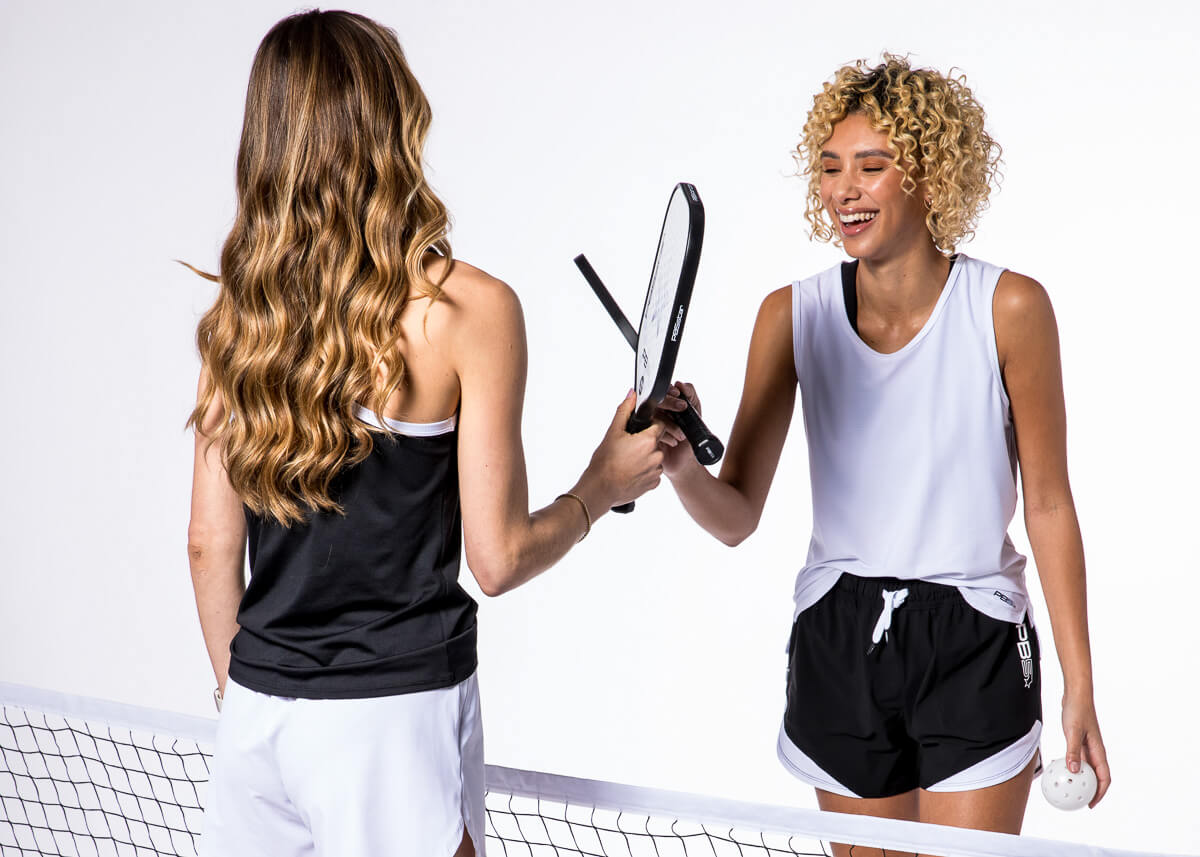Pickleball is a fantastic way to get active, have a blast with friends, and embrace your competitive spirit. But before you go headfirst into epic rallies, consider your battlefield and your weapons of choice—the pickleball court and equipment.
Unveiling the Pickleball Court: Your Playing Field Awaits
Imagine a badminton court that met tennis halfway, and you've got the basic layout of a pickleball court. It's a rectangle measuring 44 feet by 20 feet, with a net splitting the court in half at a height of 34 inches at the sides and 36 inches in the center. Markings on the court include a baseline, a non-volley zone at the net called the "kitchen" (we'll get to that juicy detail in a sec.), and service lines that come into play during the serve.
Court Surfaces: Finding Your Perfect Match
The court you play on can significantly impact your pickleball experience. Indoor courts offer a controlled environment, perfect for year-round play. They're typically made of smooth concrete or wood, providing a consistent bounce for those perfectly placed shots.
But sunshine and fresh air calling your name? Head outdoors! Outdoor courts come in various materials, with asphalt being a popular choice. It's durable and affordable, but the bounce can be slightly trickier to master. Paddle courts, made of interlocking tiles, offer a cushioned playing surface that's easy on the joints – ideal for those longer games. No matter your preference, there's a pickleball court out there waiting to become your personal pickleball paradise.
Equipping Yourself for Pickleball Victory
Now that you've explored the pickleball court, it's time to choose the right pickleball equipment for victory, starting with the paddle. Your paddle is an extension of yourself on the court, so choosing the right one is vital.
Pickleball paddles come in various weights, grip sizes, and materials. Beginners might find a lighter paddle easier to handle, while more experienced players might opt for a heavier paddle for extra power. Grip size is also essential – a grip that's too small can lead to hand fatigue, while a too-large grip can hinder control. As for materials, wood paddles offer a classic feel, while composite and graphite paddles provide a lighter swing weight and more pop in your shots. Don't worry; we'll break down the paddle types further in a second so you can find your perfect match.
Pickleballs: The Ammunition for Pickleball Domination
Pickleball equipment continues beyond the paddle. Just like a tennis racket needs a tennis ball, your pickleball paddle needs ... well, a pickleball. These whizzing spheres come in two main varieties: indoor and outdoor. Indoor pickleballs are made of plastic and have smaller holes, perfect for the controlled environment of a gym. Outdoor pickleballs, on the other hand, are slightly larger and have bigger holes. This extra breathing room helps them handle the elements, like wind and sunshine, that can affect their flight path.
Pickleballs also come in different pressure ratings, which impact how they bounce. A higher-pressure ball will bounce more, while a lower-pressure ball will have a softer bounce. New players might find a lower-pressure ball easier to control, while more experienced players might prefer a higher-pressure ball for more aggressive shots. Keep your eye on the color too. Pickleballs typically come in bright yellow or neon colors for maximum visibility, especially during those fast-paced rallies.
Pickleball equipment: Safety and Style on the Court
Victory is sweet, but safety comes first. Pickleball might be a fun and social sport, but it still involves moving quickly and hitting a small, hard object. Eye protection is a must-have for all players, regardless of skill level. A well-placed shot can take an unexpected turn, so a good pair of sports glasses shield your eyes from wayward pickleballs.
Comfort is key, too. Loose-fitting, breathable clothing allows unrestricted movement, while comfortable athletic shoes with good court grip help you navigate those quick bursts of speed and sudden stops. Looking snazzy on the court is a bonus, so be bold and pick clothes and shoes that reflect your style. After all, confidence can be a powerful weapon on the court, just like your trusty paddle and pickleball.
Bonus Section: Essential Pickleball Lingo
Pickleball may be a breeze to pick up, but there's a whole language waiting to be discovered. Brush up on these common terms and you'll chat up your fellow players like a pro in no time.
Dink: A gentle shot played around the net.
Drive: A powerful shot hit toward the opponent's baseline.
Volley: Hitting the ball before it bounces.
Overhead: Hitting the ball with a swing from above your head.
The Kitchen: The non-volley zone near the net (yep, confusing, right?).
Mastering these terms will make you sound knowledgeable and help you understand the game at a deeper level. So, the next time you hear someone yell, "Dink shot incoming." you'll be ready to return it with finesse. Now that you're armed with the knowledge of the court, equipment, and some lingo, you're well on your way to pickleball domination. Grab your paddle, gather your friends, and get ready to have a blast on the court.




